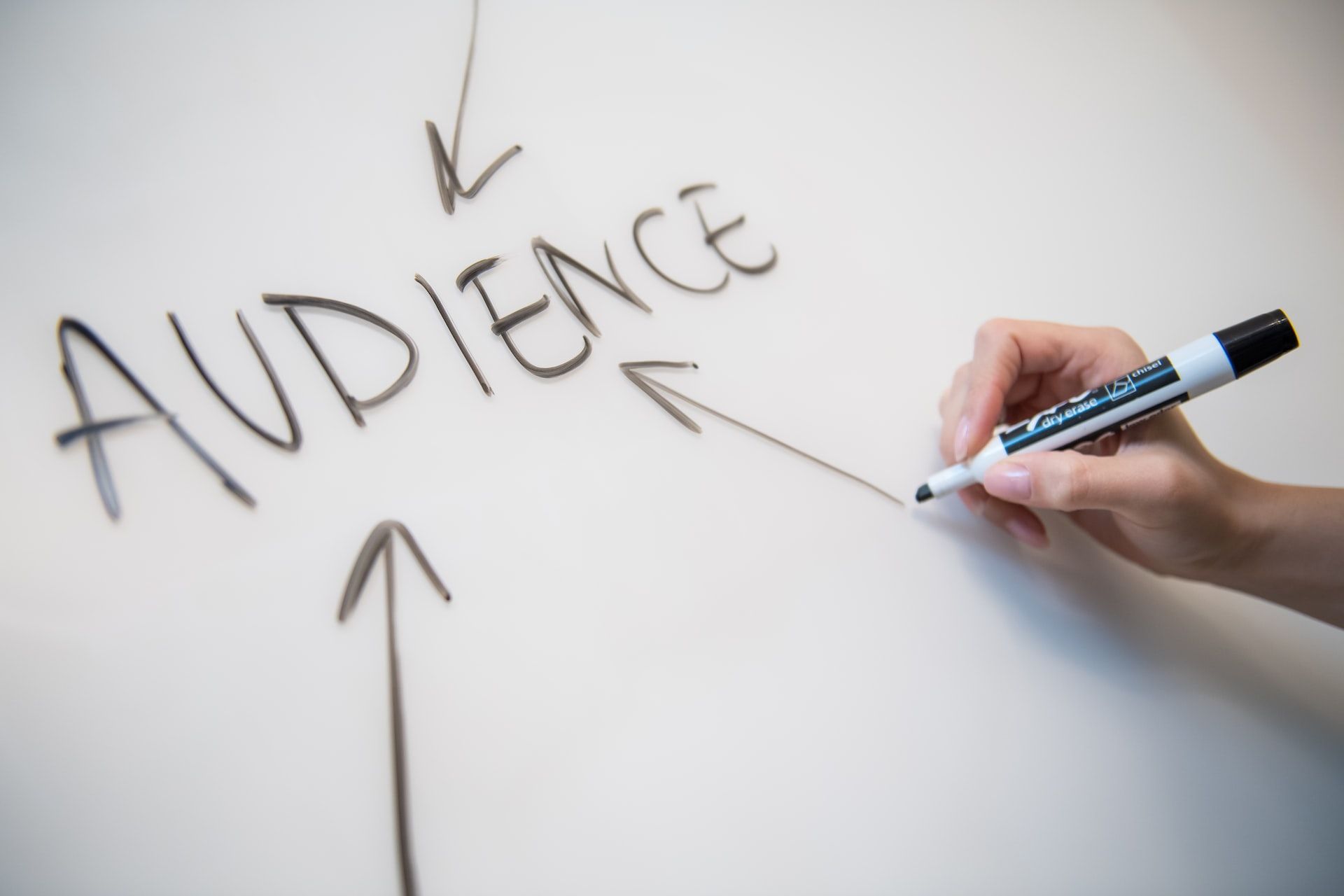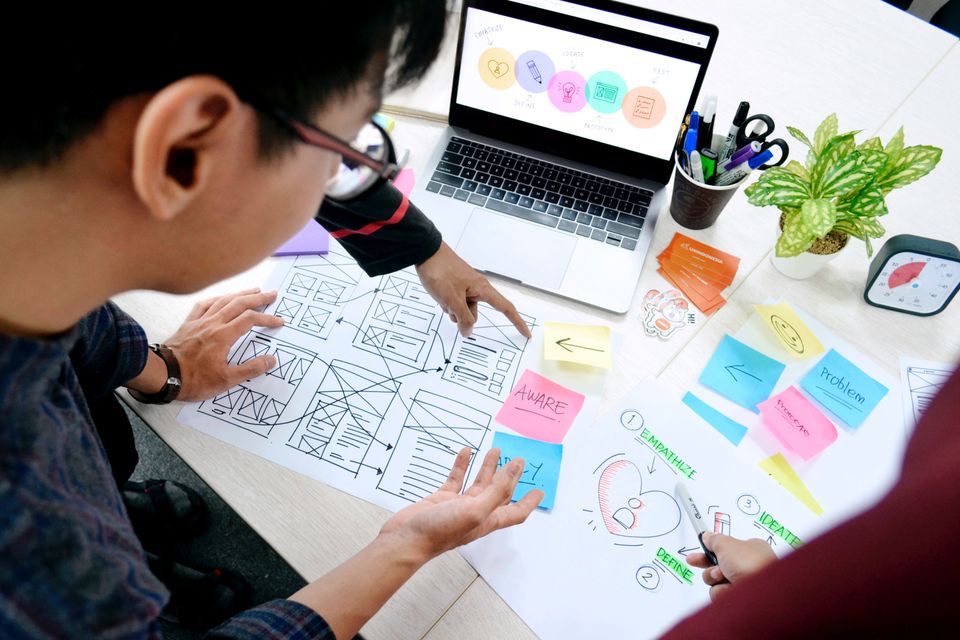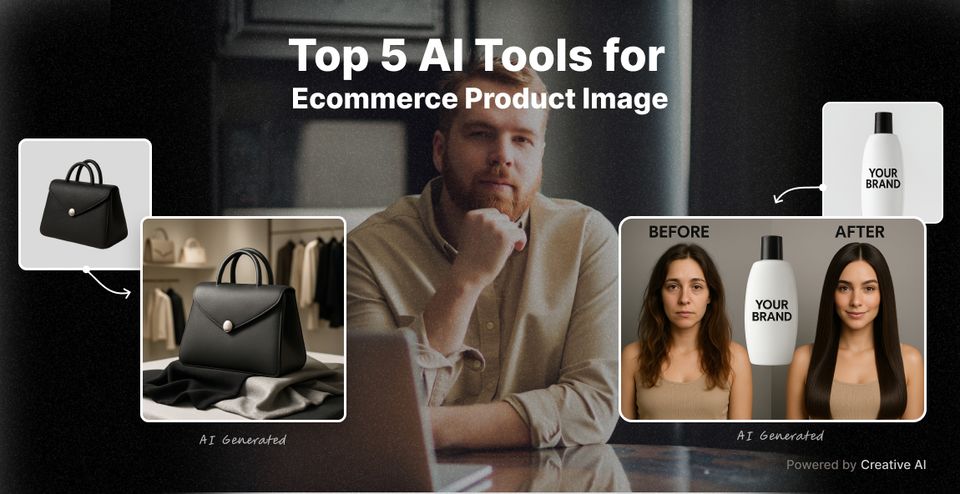Have you ever questioned why certain businesses invest so much time, energy, and resources in brand designers, UX/UI designers, and designers who handle marketing-related tasks? In essence, they invest a significant amount of their resources to create appealing and intuitive UX designs.
Why so? To answer this question, here are some UX design stats to consider:
- Every $1 invested in UX results in a return of $100 (ROI = 9,900%).
- 50% of consumers said that they won't use a website if it's not mobile-friendly, even if they like the business.
- 88% of users are less likely to return to a website after a bad user experience.
- If a website needs more than 3 seconds to load, 40% of the people leave the website.
What is UX Design
Let’s start with a little context.
UX, or User Experience design, is a process that designers leverage to create digital products that offer meaningful and relevant interactions between the user and the enterprise. The term UX design encapsulates the entire design process, from acquiring and integrating the product into the digital touchpoint while laying strong emphasis on branding, design, usability, and functionality.
UX design aims at making the software easy to use as well as making no compromises with design quality and brand image. UX design can extend beyond digital touchpoints and include marketing campaigns, packaging, and even after-sales support.
Interested in UI/UX Design? The Must-Read UI/UX Design Book is available now! 📖
In a nutshell, UX design is aimed at delivering solutions that engage users while offering them an appealing experience coupled with a clear flow that leads them to experience the brand in the best way possible, offers all the features and functionalities that can help users with any information they may need, and subsequently make a positive purchase decision.
10 Ways How UX Design Accelerates Business
UX Design matters a lot in how a brand can influence its target audience. Its influence is so potent that it has the power to create or break a company. Therefore, the brands that are on the front line are those that recognize the importance of UX design in the development of a company.
Here, we'll go through 10 of the many significant ways that UX design may help in accelerating business success. So without further ado, let’s get to it.
1. Attractive Design Grabs Attention
Who doesn't look at pretty things?
Any product first makes an impression on us visually. What about the catchphrase "UX above UI" that we designers shout?
Don't misunderstand us. The phrase "Deal with the user experience first and then go to the user interface" is what we designers mean. This does not imply that we are pushing individuals to create just useful and ugly things. No. We enjoy making intelligently beautiful things.
You invest in the appearance, use, and personality of your product when you engage a professional designer for it.
Most individuals value the ‘experience’ they have while engaging with a brand and a positive experience usually results in a positive purchase decision.
2. The Influence of Emotion
No successful company will ever admit that they put more emphasis on the feelings that its products evoke than on its features.
Sounds strange? Consider this: If a company's target audience did not want or desire a particular feature, why would the company add it to its enterprise app?
It's amazing when a website or app meets the demands of its intended audience! A system that meets both physical/functional demands while also attending to the user’s emotional needs is a surefire win.
People identify with a brand since it not only fills a need for them but is also hand-selected to fit their tastes and lifestyle. Most people are emotionally wired. Therefore, the more a brand or product can appeal to their emotions, the more it can relate to them and reflect them, and the more probable it is that the user will become a loyal customer.
The Ultimate UI/UX Design Course - Take your UI/UX best practices to the next level with our fully coded examples included! ⏰ 80% OFF Special Offer
3. Usability
As we frequently point out, design is more than just making things pretty. Making things simple to use is the main focus.
A well-planned product is always well-designed.
Development teams tend to concentrate on the features that need to be developed when an idea is brought straight to them. It's not a problem. It is their responsibility. A designer, on the other hand, is educated to address the issue, identify the best course of action, and determine what benefits the client as well as the business.
When working on a project, a designer pays close attention to usability, navigation, readability, and many other elements that, in addition to aesthetic appeal, make an application or website very simple to use.
Therefore, if you intend to skip the crucial UX design step, be aware that your product may end up in app limbo while your target market chooses a different option.
4. Consistent Brand Positioning
A brand can be recognized by its persona and even more so by its colors.
Your product's developer will be able to add your logo and colors to the app being developed, but they might not be able to give it your brand's personality.
In the end, this will produce a product that vaguely resembles your brand but appears quite disassociated.
Hiring a qualified UX designer will guarantee that the brand identity is upheld across the look and feel of your product.
5. Targeted Marketing

On mobile devices, the average user scrolls through an advertisement in under a second. Therefore, before you can blink, a potential buyer may never again see your advertisement.
The only way to guarantee that your target audience sees your advertisement and clicks or taps on it is to give it an appealing and simple design.
Similar to how brand consistency is required in product design, it is also required in marketing strategy. Therefore, hiring a professional UX designer to develop all of your marketing materials will actually give them consistency, professionalism, and a fantastic look.
6. Client Trust
Do you recall the last time you visited your favorite grocery shop and noticed some peculiar-looking, with strange packaging? What did you think? Did you say, "Oh my God! I won't ever touch that. How poor will the product be if the design is so careless? or did it sound like, "Hmm. I don't evaluate a book based on its cover. I'll test this out.”
In most cases, individuals have the first of the two opinions mentioned and would turn away, never looking at that product again.
Humans tend to first assess a product's appearance before considering its actual utility.
Therefore, you will need a design that is highly appealing if you want to capture your target audience's attention. Only then can individuals approach it with confidence to give it a try.
7. Engaging and Interactive
Having trouble explaining how to use your app to others? Use an onboarding video or briefly describe the major features.
Do you want to guarantee that your clients use your goods for a long time? Make it participatory.
These minute details that people frequently overlook wind up being crucial turning points in a product's success. People would anticipate a website or application to simply take commands and output the desired result when using it.
However, the user is surprised and happy when the system responds to their requests, assists them, does so in accordance with their input, or otherwise makes the process more engaging.
It helps to win over multiple consumers and makes the user experience memorable. They'll have positive memories of your product, use it again, and perhaps refer other people to it. Moreover, consider doing a live video through SRT streaming to create a deeper connection with your audience.
8. Encourages Users to Act
Professional designs consider the end user's needs as well as those of the design. All required features must operate flawlessly for a product to be considered well-developed.
A well-designed product will ensure that consumers find it simple to use and click/tap on all the appropriate buttons to complete a purchase or gather the information they need so that both they and the company may benefit from it.
Consequently, a successful design encourages users to carry out pre-planned business and designer actions. The user is steered to the CTAs without feeling overwhelmed by them because of the way these actions are set out.
9. Content That Is Simple to Read
The user can easily absorb content thanks to professional design. It implies that the user won't need to look for the information they need; they can find it with a few simple clicks.
A common proverb reads, "Good design is unseen." This argues that when a website or application is well-designed, the design itself does not stand out as a barrier between the user and what they are looking for.
The design, on the other hand, delivers the user to the conversion page while silently directing them to the relevant content and sharing the information they need.
10. User Engagement
Here's the main justification for why effective UX design is essential for business growth. Since the phrase "customer experience" refers to a much larger picture, everything we do is a part of it.
Here, design is crucial since it conveys your tone, personality, commitment to your consumers and your organization, level of service, and much more.
A potential lead's customer journey starts the moment they visit your website, go to the page where they download your app, or even just see a marketing advertisement. The process of a lead becoming a customer, and generating additional leads for you is an ongoing process, critical to business growth.
Advantages Offered by UX Design for Product Development
Given the technologically infused world we now live in and the speed at which companies are utilizing the digital arena to accelerate their growth and maximize consumer reach, good UX/UI offers a number of benefits:
- Reduces Resource Use
UX/UI designers comprehend both the user and the corporate objective. They develop user journeys and prototypes based on their research to confirm decisions made before any functionality is developed. This procedure lowers the likelihood of product failure while also cutting down on development time and costs. - Usability-Centered Design
Task simplification and the creation of an intuitive navigation experience are the main goals of the UX/UI design process. Given this emphasis, user behavior and pleasure are the top concerns, which in turn contribute to the establishment of the company's and the product's reliability. And that invariably results in increased business. - Differentiation of Products
The result assures that the product design stands out from the competition in terms of look and feel because UX/UI design necessitates that the designers comprehend the users, the business, and the brand. This gives you a much-needed advantage over competing items in the same market category that would have come out without UI/UX. - User Retention
A better user experience when utilizing a product or browsing a website will keep customers coming back, eventually resulting in greater loyalty.
The Takeaway: The Role of UX Design in Business Growth
Initial impressions have a lasting effect. And the same is true of your company's internet visibility. You will lose credibility and trust with your audience—not to mention the sales—if you don't invest time, money, and effort into creating a well-researched, well-strategized, and well-designed digital product or business website.
Given these facts, it is impossible to overestimate the importance of UX design in a company's success, and every firm needs to be aware of the direct influence it can have on the success of its product or service.
That's all, then! I'd merely like to conclude by stating that practically everything we see around us relies heavily on design. So it would be sacrilege to assume that it is not required for your business! But for aligned UX design, you need a vetted partner.
Author Bio
Asha Rajput is the Founder of 300Mind - a UI/UX design agency. She has spent more than 10 years working in the UI/UX design and game development industry, with a specialized focus on design and development.




